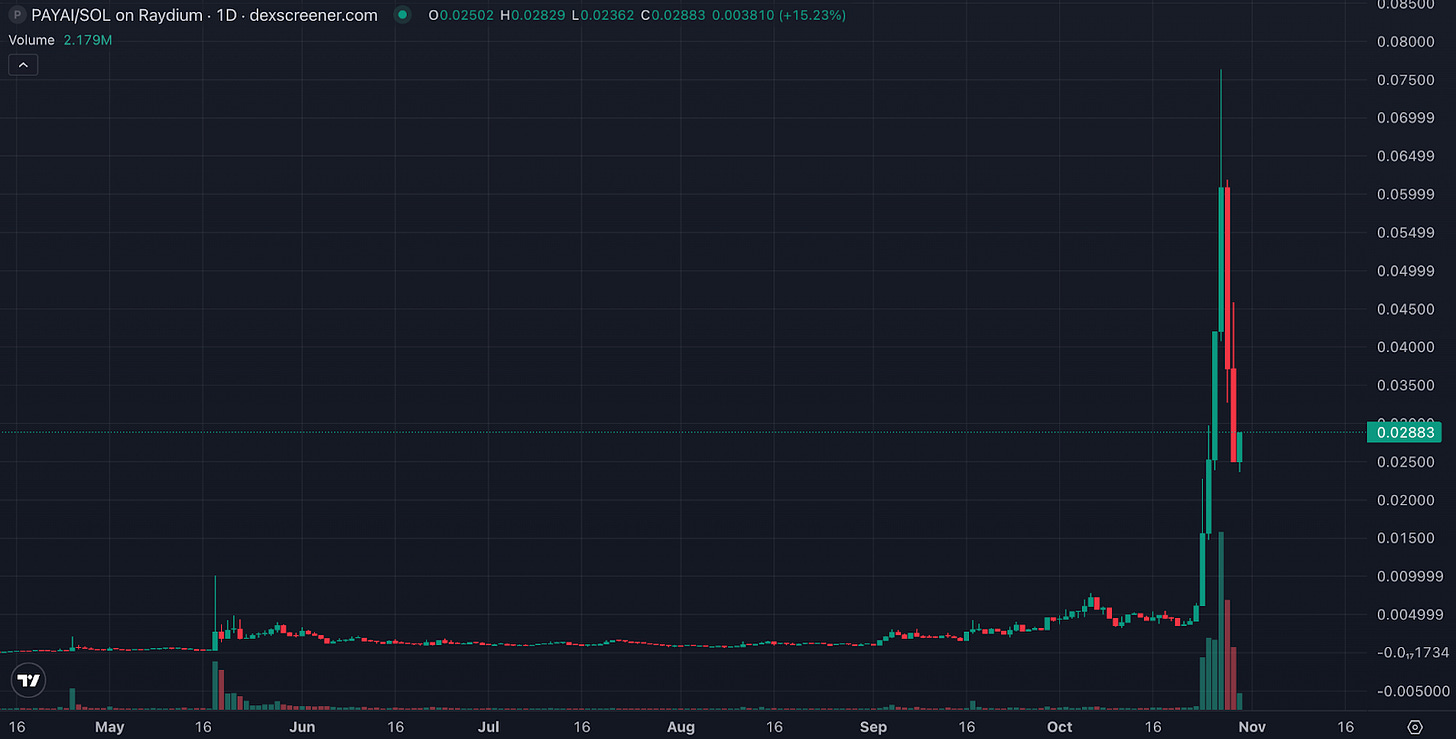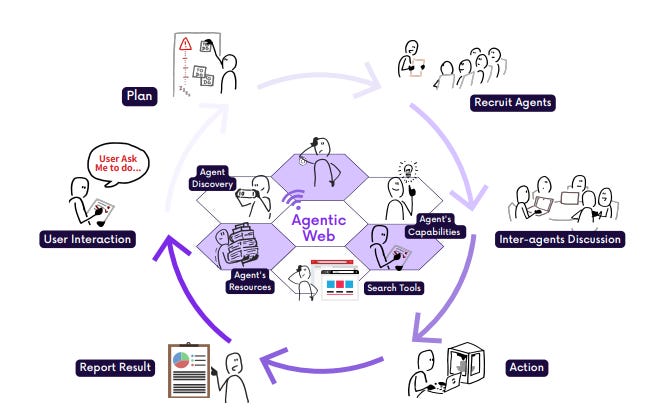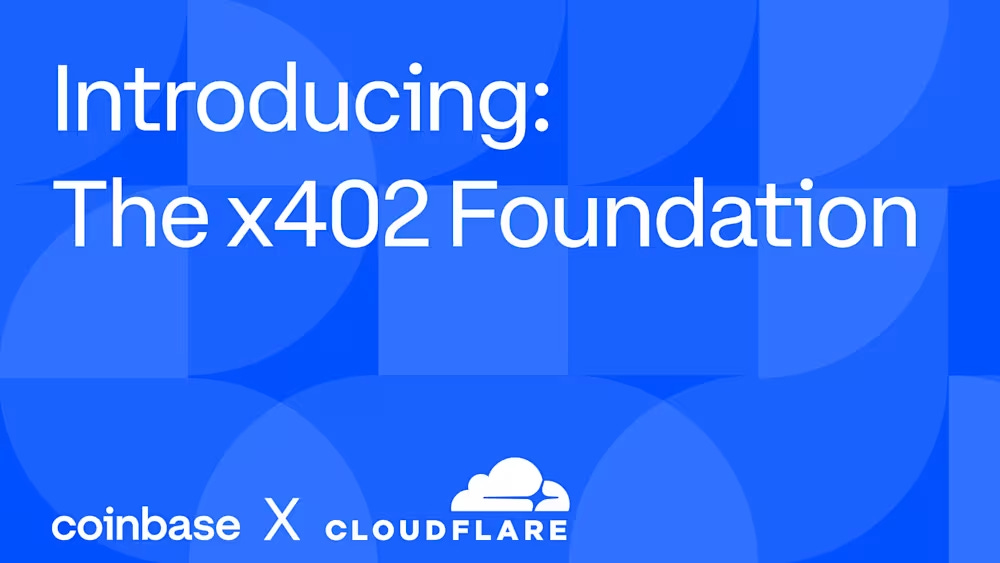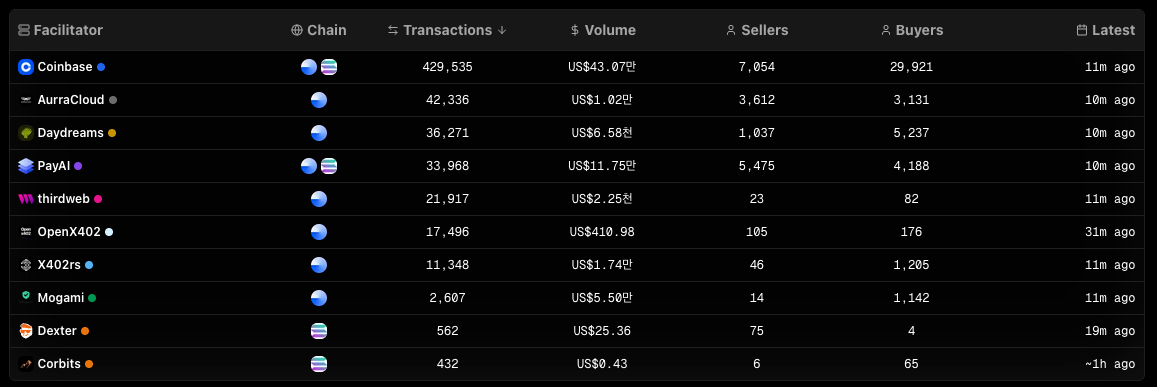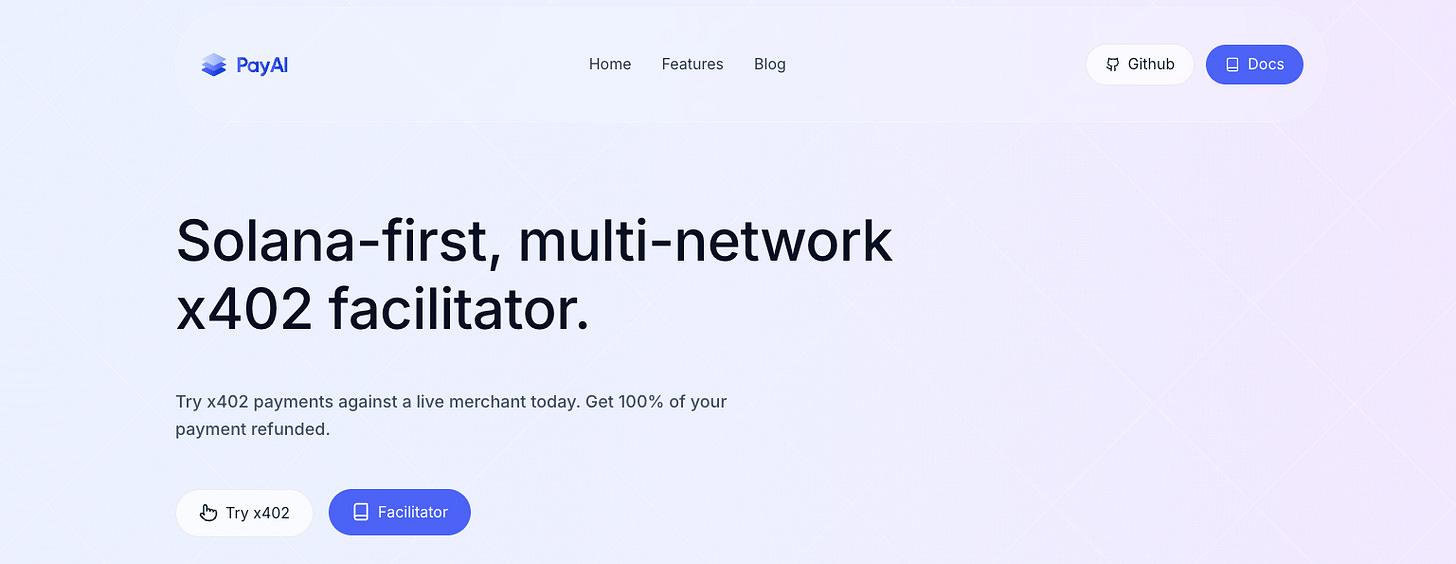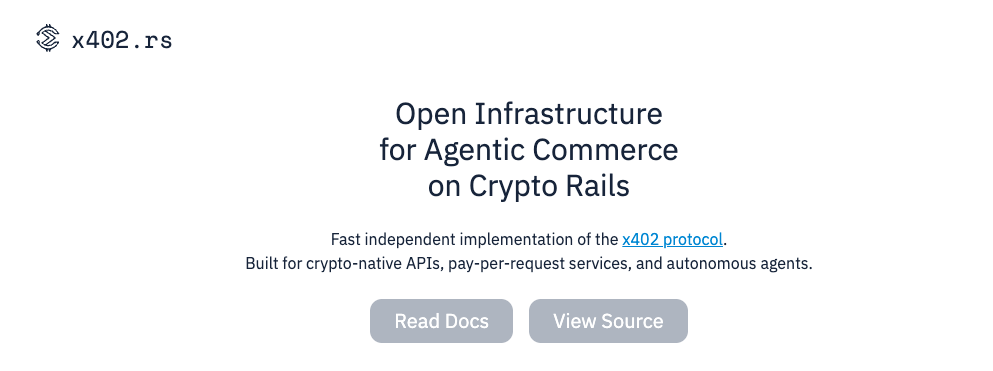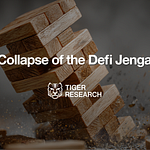Few truly understand that x402 — often misunderstood — was created by Coinbase. This report breaks down its role in Coinbase’s strategy and its significance in the AI agent era.
Key Takeaways
x402, a proposed standard for autonomous AI agent payments, is emerging as a key topic in the Web3 and AI convergence space.
Coinbase and Cloudflare have jointly established the x402 Foundation, introducing the concept and setting early development standards.
Early facilitator projects such as PayAI, x402.rs, and KITE AI are drawing increasing attention for their potential implementation of the protocol.
1. x402, x402, x402
The recent spotlight in the market is on x402. Token prices of related projects have surged, and the number of on-chain transactions processed through the x402 Protocol has increased more than twentyfold in just one month. Yet, few are aware that the concept was introduced through the establishment of the x402 Foundation by Coinbase and Cloudflare.
So, what exactly is x402? It is a protocol standard that enables AI agents to make payments autonomously—without human approval. Currently, all AI services, including ChatGPT, face a structural limitation: they cannot complete transactions independently because payment authorization still requires human intervention.
The x402 standard seeks to eliminate this barrier, enabling AI agents to conduct verifiable, secure, and permissionless payments directly on-chain.
2. The Origin of x402
In the era of AI agents, users will no longer browse the web directly. Instead, AI systems will gather, interpret, and act on information autonomously. The primary consumer of internet content will shift from humans to machines—a structural change that challenges the foundation of the current web economy.
Today’s web relies on human-driven traffic and advertising. Users visit websites, view ads, and generate revenue that sustains creators. However, once AI agents replace human browsing, there will be no direct audience for ads, undermining this model.
The internet will therefore require a new value and payment structure suited for machine-to-machine interactions.
The expected model is one of automated, micro-level payments between AI systems and content providers. For example, an AI assistant might pay $0.03 to access a research paper for sleep analysis, and $0.15 to call an API for genetic data—without user registration, subscriptions, or manual approval. Creators are compensated per use, while the AI seamlessly accesses the necessary data.
For such a model to function, payments must occur automatically and autonomously, without human intervention. Current financial systems cannot support this, as every transaction still requires user authentication or approval.
x402 emerges as the foundational payment infrastructure for this future. It aims to establish the standard that will allow AI agents to transact, compensate, and exchange value independently within the Web3 economy.
3. The x402 Foundation: Integrating Protocol and Infrastructure
While x402 was initially developed by Coinbase, the company established the x402 Foundation in partnership with Cloudflare to scale the protocol across the broader web. The collaboration raises an important question: why did Coinbase, a crypto-native firm, partner with a global web infrastructure provider?
The answer lies in x402’s design. It aims to integrate payment logic directly into the web’s foundational layer (HTTP)—essentially embedding transaction capability into the core structure of the internet. To achieve this, a protocol-level system requires a global, low-latency infrastructure capable of handling web-scale traffic.
Cloudflare provides exactly that foundation. With servers deployed in more than 120 countries, it operates one of the largest real-time traffic relay and web security networks worldwide. In this partnership, Coinbase designs the payment protocol, while Cloudflare ensures it can operate reliably within live web environments.
Another development worth noting is Cloudflare’s upcoming stablecoin, NET Dollar. Although the current x402 whitepaper identifies USDC as the primary settlement token—due to its regulatory stability and liquidity—Cloudflare’s entry into stablecoins suggests a strategic alignment. If NET Dollar becomes integrated with x402, Cloudflare could directly link its global network infrastructure with web-based payment rails, extending its role from traffic facilitator to payment provider.
4. How x402 Operates
The x402 protocol defines a payment process that enables AI agents to complete transactions autonomously, without human intervention or intermediaries.
The following example illustrates the sequence:
An AI agent requests a sleep-related research paper from an online publication platform to enhance a user’s sleep analysis model.
The platform responds with an HTTP 402 “Payment Required” message. Along with the response, it provides key details: the required payment amount, the blockchain network to be used, and the transaction parameters for processing the payment.
The AI agent automatically executes the payment based on the provided data, signs the transaction, and resubmits the request including the on-chain transaction proof.
The platform verifies the transaction on the blockchain and, upon confirmation, delivers the requested content to the AI agent.
Through this sequence, x402 replaces traditional intermediaries in the payment process, allowing AI agents to transact, authenticate, and access digital resources independently.
5. How x402 Differs from Traditional Payment Systems: From Human to Code
Traditional payment systems have always relied on banks and card companies as central intermediaries. When a person clicks a “pay” button, the financial institution authorizes the transaction—its approval serving as the guarantee that the payment is legitimate and secure.
Under x402, there are no intermediaries. The AI agent sends a payment request, and the server automatically validates it through smart contracts. Authorization, settlement, and verification occur programmatically, shifting the foundation of trust from humans and institutions to code
Conventional payment processors like Stripe or PayPal still require human involvement—users must create accounts, authenticate, and manually approve transactions. For AI agents interacting with hundreds of services, this human dependency becomes a major constraint.
x402 eliminates these barriers within the web environment. Payment data is embedded directly into the request, and the AI agent completes the transaction through its own on-chain wallet. This enables machine-to-machine transactions without subscriptions, manual sign-ins, or external approval.
The key difference is not just speed but a structural shift in how trust and verification are encoded. In x402, trust is expressed in code: smart contracts handle approval, settlement, and proof of payment, while humans only review final outputs. Transaction validity is guaranteed not by financial intermediaries but by protocol rules and blockchain records, establishing a decentralized, intermediary-free payment framework.
Designed by Coinbase, x402 functions as a “language of the web”—a framework through which AI can act, transact, and access data autonomously. As this protocol gains adoption, the fundamental action of the internet may evolve from “search” to “pay,” marking a shift toward an AI-driven digital economy.
6. The x402 Ecosystem
Even when AI agents can make payments autonomously, a coordinating layer is required to prevent errors, double payments, or inconsistent executions. This function is handled by Facilitators—intermediary nodes that verify payment conditions and manage settlement between AI agents and service providers. In the x402 network, facilitators form the trust and execution layer that maintains transactional integrity.
Although several facilitators operate within the x402 ecosystem, Coinbase currently dominates the network with roughly 70% market share, followed by PayAI Network and x402.rs with around 10% each. Another emerging participant, KITE AI—backed by Coinbase investment—has also begun to draw market attention.
6.1. PayAI: A Practical Entry Point for Developers
PayAI serves as an operational facilitator, allowing developers to experiment with x402 payments without building complex infrastructure—essentially providing a “sandboxed” environment for real-world testing.
Here’s how it works: when a developer sends a request to a paid API, the server responds with details such as the required payment amount, blockchain, and token type. PayAI then validates the transaction, processes settlement, and returns the confirmed result to the developer.
The key advantage of PayAI is its low entry barrier. It automatically refunds payments sent to its Echo Merchant test environment and even covers network fees, allowing developers to simulate real payment flows without financial risk.
However, this design also introduces a limitation. Because PayAI handles all verification and settlement centrally, any operational failure could disrupt the entire system. For large-scale deployments, additional redundancy and verification mechanisms are necessary—such as cross-checking multiple facilitators or decentralizing settlement layers to ensure reliability.
6.2. x402.rs
x402.rs serves as a technical blueprint that demonstrates how a facilitator should operate within the x402 framework. Written in the Rust programming language, it is an open-source implementation that allows anyone to review, modify, and build their own facilitator system based on the standard.
The process functions as follows: when a server issues a payment request, the client resends the request with a signed payment payload. x402.rs verifies the integrity of this data, ensuring it has not been tampered with, and then records the settlement transaction on the blockchain.
Its primary strength lies in transparency. The verification and settlement logic are fully open, enabling easy integration with external systems. Rust’s strong memory safety and performance features also make it well suited for high-security and high-throughput environments.
However, x402.rs represents a foundational framework rather than a complete production system. Real-world deployment requires additional components such as network reliability management, retry mechanisms, and transaction tracing. Supported blockchains and functions are currently limited to the essential modules needed to demonstrate the protocol’s core behavior.
6.3. KITE AI: An AI-Dedicated Blockchain Integrating Identity and Payments
KITE AI is an independent blockchain designed specifically for AI agents. Unlike other facilitators that operate as middleware, KITE AI embeds coordination and verification functions directly into the blockchain layer, creating an autonomous infrastructure for trusted AI-to-AI transactions.
KITE AI’s architecture is built around three core components:
Agent Passport – A blockchain-based digital identity issued to each AI agent. It records ownership, operational purpose, and transaction permissions on-chain.
Session Keys and Spending Limits – These are embedded within the passport and managed automatically by smart contracts, ensuring that AI agents cannot execute unauthorized payments or exceed predefined limits.
Trusted Interaction Framework – When an AI uses a service or purchases data, it authenticates itself with the Agent Passport. Once payment is approved, the transaction is recorded immutably on the blockchain.
In essence, the Agent Passport enables AI agents to act autonomously while maintaining verifiable identity, authority, and spending control. This structure forms the foundation for a secure and accountable AI economy.
The key advantage of KITE AI lies in automation at the protocol level. Identity verification, authorization, payment execution, proof validation, and even dispute resolution occur seamlessly without human involvement. By embedding protective mechanisms—such as session keys, spending limits, and reputation tracking—into the blockchain itself, KITE AI provides built-in safeguards that make autonomous AI transactions both safe and auditable.
7. The Starting Point of an Internet Where AI Can Spend
x402 is still in its early stage. The idea of an M2M (machine-to-machine) economy—where AI agents pay and trade autonomously—remains mostly conceptual. Current transactions are limited to tests, and only a few early partners participate. Core elements such as payment stability, security, and legal clarity are not yet established. The ecosystem is essentially testing whether AI can function as an independent economic actor.
Still, the direction is clear. Embedding payment capability into HTTP redefines the web from an information network to a value network, enabling native economic activity between machines.
While Coinbase initiated x402, development is now shared across the ecosystem. Ethereum’s ERC-8004, Google, and Claude are integrating the protocol, and others are experimenting with new facilitator models. Coinbase is now the starting point, not the owner.
Like the early skepticism toward stablecoins, doubts remain about x402’s adoption. Yet as more players test and refine it, the vision of an AI-powered transactional web is becoming a realistic future.
🐯 More from Tiger Research
Read more reports related to this research.Disclaimer
This report has been prepared based on materials believed to be reliable. However, we do not expressly or impliedly warrant the accuracy, completeness, and suitability of the information. We disclaim any liability for any losses arising from the use of this report or its contents. The conclusions and recommendations in this report are based on information available at the time of preparation and are subject to change without notice. All projects, estimates, forecasts, objectives, opinions, and views expressed in this report are subject to change without notice and may differ from or be contrary to the opinions of others or other organizations.
This document is for informational purposes only and should not be considered legal, business, investment, or tax advice. Any references to securities or digital assets are for illustrative purposes only and do not constitute an investment recommendation or an offer to provide investment advisory services. This material is not directed at investors or potential investors.
Terms of Usage
Tiger Research allows the fair use of its reports. ‘Fair use’ is a principle that broadly permits the use of specific content for public interest purposes, as long as it doesn’t harm the commercial value of the material. If the use aligns with the purpose of fair use, the reports can be utilized without prior permission. However, when citing Tiger Research’s reports, it is mandatory to 1) clearly state ‘Tiger Research’ as the source, 2) include the Tiger Research logo. If the material is to be restructured and published, separate negotiations are required. Unauthorized use of the reports may result in legal action.


